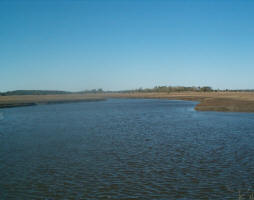 Water Woes in MENA Countries
Water Woes in MENA Countries
The Middle East and North Africa (MENA) region is the most water scarce region of the world. The region is home to 6.3 percent of world’s population but has access to measly 1.4 percent of the world’s renewable fresh water. The average water availability per person in other geographical regions is about 7,000 m3/year, whereas water availability is merely 1,200 m3/person/year in the MENA region. The region has the highest per capita rates of freshwater extraction in the world (804 m3/year) and currently exploits over 75 percent of its renewable water resources.
Due to burgeoning population and rapid economic growth, the per capita water availability is expected to reduce to alarming proportions in the coming decades. By the year 2050, two-thirds of MENA countries could have less than 200 m3 of renewable water resources per capita per year. Around 85 percent of the water in the MENA region is used for irrigation. This level of irrigation is not inherently sustainable and leads to overuse of scarce renewable water resources, which in turn results in increased salinisation.
MENA’s average water use efficiency in irrigation is only 50 to 60 percent, compared to best-practice examples of above 80 percent efficiency under similar climate conditions in Australia and southwest US. Similarly, physical water losses in municipal and industrial supplies in the region are way above world averages. Nonrevenue water is 30 to 50 percent in some cities, compared to global best practice of approximately 10 percent.
Many countries in the MENA region are dependent on water resources that lie beyond their borders. For example, Syria, Jordan and Palestine rely on trans-boundary water resources. Palestine is almost entirely dependent on water essentially controlled by Israel. The trans-boundary nature of the water resources in the Middle East makes cooperative management of these resources critical as they have the potential to induce economic and social development and reduce the risks of conflict.
Despite significant investment in the water sector, water management still remains a serious economic and environmental problem in MENA countries, as shown by frequent droughts and floods. Public health, agricultural productivity and environment is suffering due to overpumping of aquifers and deterioration of water quality as well as water quality. Improved irrigation efficiency in agricultural water use would significantly increase water availability for other sectors.
Managing demand, particularly of agricultural water use, will be the key to reduce the high costs of filling the water gap. Similarly, improvements in water management in domestic and industrial sectors could reduce system losses to globally acceptable levels. Failure to save water and to reduce uneconomic use will have severe socioeconomic repercussions because the only alternative will be desalination.
The administrative structures of both drinking water and irrigation systems are characterized by weak governance and incoherent water laws. Some countries including Egypt, Jordan and Palestine have approved national water resources plans. Other countries have developed frameworks which contain elements of policy, in the form of strategy or master plans. In general, MENA countries are beginning to recognize the importance of an integrated approach to water management. The demand for water will continue to rise across the region, due to population increase and economic growth.
| Contact information |
Salman Zafar, Ecomena
|
|---|---|
| News type | Inbrief |
| File link |
http://www.cleantechloops.com/water-woes-mena/ |
| Source of information | Ecomena |
| Subject(s) | METHTODOLOGY - STATISTICS - DECISION AID , NATURAL MEDIUM , POLICY-WATER POLICY AND WATER MANAGEMENT , RISKS AND CLIMATOLOGY , WATER DEMAND |
| Geographical coverage | n/a |
| News date | 30/04/2013 |
| Working language(s) | ENGLISH |
 you are not logged in
you are not logged in





